This entry includes a walking tour! Take the tour.
Introduction
Text-to-speech Audio
Located within Tarrytown, NY, the North Grove Street Historic District is a small residential enclave of five historically significant houses situated upon a hill overlooking Tarrytown’s central business district. Forming a grouping that extends south down Grove Street from Neperan Road towards Elizabeth Street, all five houses in the district date between 1848 and 1868 and reflect a range of distinct architectural styles popular in the mid-19th century, including French Second Empire, Gothic, and Italianate. Number 1 Grove Street serves as the headquarters for the Historical Society of the Tarrytowns, which also once owned 19 Grove Street, while the other houses remain private residences. The North Grove Street Historic District was added to the National Register of Historic Places in 1979.
Images
House at 19 Grove Street
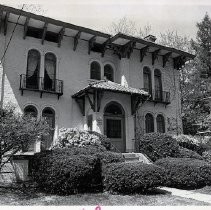
#1 and #19 Grove Street - Historical Society of the Tarrytowns
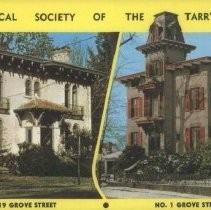
Ogden residence, 2 Grove Street
.jpg)
Tarrytown Historical Society, 1 Grove Street
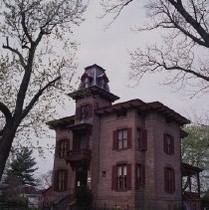
View of addition to #8 Grove Street
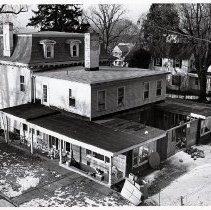
15 Grove Street
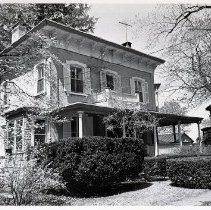
Backstory and Context
Text-to-speech Audio
Settlement of the Tarrytowns dates back to 1677 when Frederick Philipse received a land grant for a large tract that was subsequently enlarged via acquisition. The resulting Philipsburg Manor, home to many tenant farmers over the next century as well as a large provision plantation, was ultimately confiscated by the Continental army in retribution for the Philipse family’s loyalty to the British Crown during the American Revolution. The North Grove Street Historic District was developed on land that was once part of this earlier settlement.
Situated along the Hudson River, Tarrytown had easy access to water for trade and travel, as well as main roads running through the hamlet. Between 1842 and 1847, construction of the Croton Aqueduct brought many workers and the businesses that catered to them to the area, and in 1848 the railroad arrived. Consequently, the population began to sprawl eastwards. The North Grove Street Historic District is a reflection of this mid-19th century development and expansion of settlement that many Hudson River communities experienced during this time.
North Grove Street, once referred to as “Goose Street,” is where several prominent Tarrytown figures constructed residences for themselves and their families. Number One Grove Street, a red brick, two-story house with a three-story tower, was built in 1848 by Jacob Odell as a gift for his wife Harriet. He was a prosperous merchant, the first president of the Village of Tarrytown, and a former supervisor of the Town of Greenburgh. In 1860, Odell constructed a two-story home for his daughter as a wedding present that featured a railed porch and three-story tower. Across from the younger Odell's home was a house built that same year by Marcus Raymond, who served as editor of the Tarrytown Argus newspaper for thirty years. Number Nineteen Grove Street dates to 1856 and was built upon land formerly part of the Archer estate. It was purchased in 1870 by DeWitt Clinton Hay, a banknote engraver from New York City, whose widow donated the property to the Historical Society of the Tarrytowns in 1901. Also included in the district is a two-story 1868 house with a mansard roof that was home to three generations of doctors.
In 1978, the Village of Tarrytown designated the area of North Grove Street a Village Historic District, and the following year it was added to the National Register of Historic Places. While four out of the five homes in the North Grove Street Historic District remain private residences, since 1952 Number One Grove Street has served as the home of The Historical Society Inc., Serving Sleepy Hollow and Tarrytown. Within the walls of One Grove Street are museum exhibit rooms, a library, and storage rooms dedicated to preserving local history.
Sources
- Canning, Jeff, and Wally Buxton. History of the Tarrytowns, Westchester County, New York, from Ancient Times to the Present. NY, NY: Harbor Hill Books, 1993.
- Marshall, Mary Ann, and Sara Mascia. Tarrytown and Sleepy Hollow: The Historical Society, Inc. Serving Sleepy Hollow and Tarrytown. Charleston, SC: Arcadia, 1997.
- “North Grove Street Historic District #79001650.” National Register of Historic Places. United States Department of the Interior/National Park Service. 1979. https://catalog.archives.gov/id/75323135
- The Historical Society, Inc. of Sleepy Hollow & Tarrytown. https://www.thehistoricalsociety.net.
- Williams, Gray. Picturing Our Past: National Register Sites in Westchester County. Westchester County Historical Society. 2003.
Westchester County Historical Society
Westchester County Historical Society
Westchester County Historical Society
Westchester County Historical Society
Westchester County Historical Society
Westchester County Historical Society
